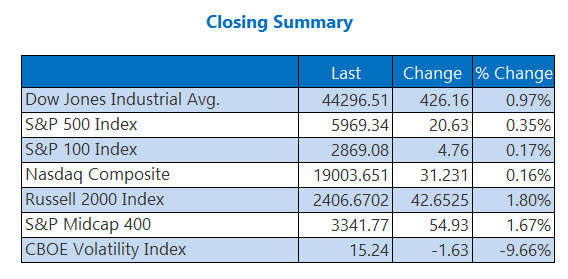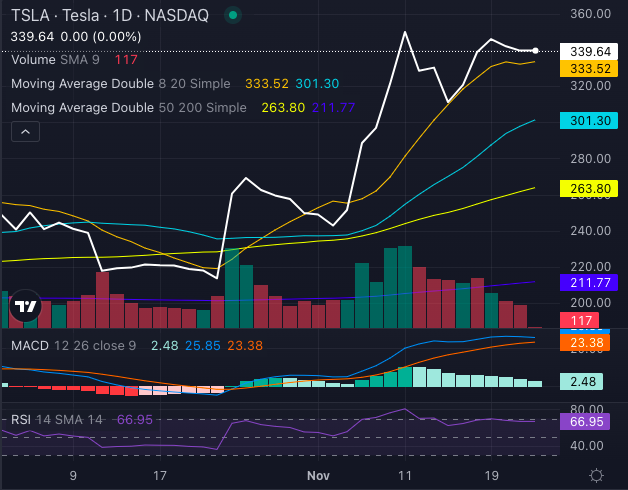Investors have been captivated by the revival of stock splits in recent years. Triggered by robust business performance and subsequent stock price appreciation, companies have opted for stock splits to maintain affordability for average retail investors.
A review of the past years underscores this trend, with several prominent companies, such as Amazon, DexCom, and Shopify, opting for stock splits.
Examining the top-performing stocks of the past year indicates the likelihood of more stock splits in 2024.

Image source: Getty Images.
Exploring Nvidia’s Potential
Nvidia (NASDAQ: NVDA) is celebrated for its innovation in graphics processing units (GPUs), catering to video games, cloud computing, and generative AI.
Data indicates that Nvidia controls around 95% of the market for processors used in machine learning, positioning the company to lead the generative AI market too.
Nvidia’s recent financial results endorse this position, with record revenue of $18.1 billion and diluted earnings per share (EPS) surging 1,274% for the fiscal 2024 third quarter.
Despite its exceptional growth over the years, Nvidia still trades at a reasonable price-to-earnings-to-growth (PEG) ratio of less than 1. Given its performance and valuation, the company’s history suggests a potential for another stock split in the near future.
Evaluating Microsoft’s Prospects
Microsoft (NASDAQ: MSFT) is renowned for its Office suite and Windows PC operating system but made significant strides in generative AI by investing in OpenAI and releasing Copilot.
Big Tech Takes on AI: Microsoft and Meta Platforms in Perspective
Microsoft’s AI-Infused Growth
Microsoft’s Azure Cloud has surged forward, bolstered by an impressive demand for its AI tools. In the third quarter, Microsoft outpaced its rivals, with three percentage points of its growth directly linked to AI demand.
For the fiscal 2024 first quarter, Microsoft reported a 13% year-over-year revenue growth and a 27% climb in EPS. However, the impact of Copilot, a featured AI tool, has not yet manifested in the financial statements, as it wasn’t available for general release until November.
The tech giant has a history of remarkable growth, but its prowess in AI has propelled its stock price to a 57% surge in 2023. Over the past decade, Microsoft’s revenue has leaped by 177%, catapulting net income up by 294%. Such performance has vaulted the stock price by nearly 817%, currently standing at approximately $376, implying a potential for more gains on the horizon. Microsoft, trading at 33 times forward earnings, appears undervalued relative to its stellar history.
Despite conducting nine stock splits between 1987 and 2003, the company’s last split was in 2003. Presently, Microsoft’s stock is trading at a new all-time high, indicating considerable growth. With the company just beginning to tap into the vast potential of its AI initiatives, the prospect of a stock split may loom large given its robust growth profile.
Meta Platforms Embraces AI Wave
2023 proved to be a stellar year for Meta Platforms, as a confluence of factors, including a robust cost-cutting campaign and a resurgence in digital advertising, drove the stock up by an impressive 194%. The infusion of AI became a major catalyst for Meta’s resurgence, where its long-standing expertise in the field facilitated the launch of Llama AI, generating substantial revenues across major cloud services.
In the third quarter, Meta’s revenue soared by 23% year over year, and its EPS experienced a meteoric surge of 168%, despite modest 7.8% growth in digital ad spending. With spending on digital ads gaining momentum again, Meta’s growth potential is set to receive a significant push.
Advantage+, an AI-powered advertising tool on Meta’s platforms, has emerged as one of the fastest-growing ad products in the company’s history, significantly enhancing advertiser ROI and streamlining the ad campaign process.
Over the past decade, Meta Platforms has witnessed exceptional growth, with revenue ballooning by 1,260% and net income skyrocketing by 1,700%. Riding on these robust financials, the stock price has seen a staggering surge of 493%, currently hovering around $357, revealing immense potential for further growth. Notably, Meta’s stock is selling at a PEG ratio of less than 1, indicating a compelling investment opportunity.
Given its consistent growth trajectory and symbiotic relationship with AI, 2024 might be the year Meta Platforms follows in the footsteps of its tech contemporaries and undergoes a stock split, reflecting its solid performance and robust growth prospects.





